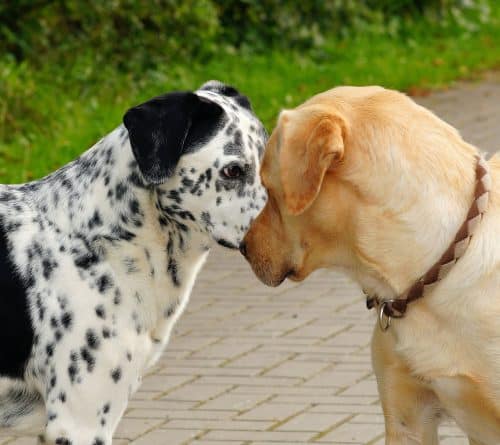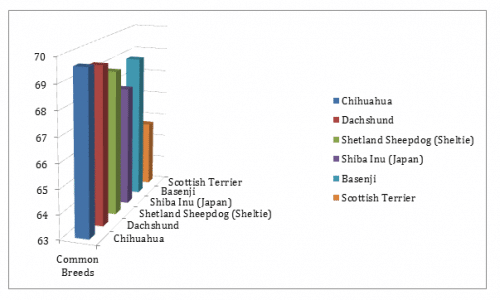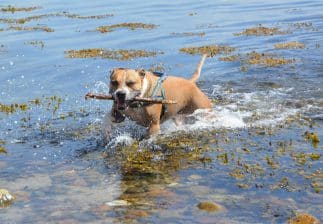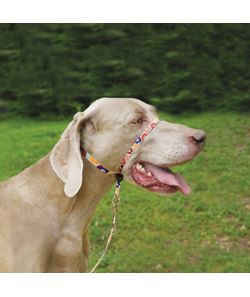When dogs behave aggressively towards each other. Has your dog been attacked by another dog?
Dog Aggression what are the Myths and Facts.
We’ve all heard about the aggressive dog, that ‘mean, dangerous’ animal down the street. Many of us have even seen dogs fight with each other, or worse. It would be hard to miss stories of vicious dogfights, especially with the help of mass media. But why exactly do dogs behave aggressively towards each other, and why do they sometimes feel the need to kill each other?
Why is a dog attacking my dog? Did I miss something?

To understand the whole behaviour we have to go way back …
The Grey Wolf and Alpha Theory
When attempting to understand the ‘why’ for any dog behaviour, it is sometimes best to look at the way their ancestral wolf behaved toward each other. Thousands of dog owners still believe in the ‘Alpha’ top dog, thinking that in a dog’s mind, the strongest always rank highest and deserves the first pick of everything.
Thanks to the great ‘Dog Whisperer’ Cesar Millan, this theory was further proliferated throughout America and the world.
Most people don’t know this Alpha theory was based on a poorly conducted zoological study of captive wolves way back in the 1940s, a time when we already had a very poor understanding of canine behaviour. Biologists concluded it’s natural for wolves to battle for dominance, the strongest becoming the ‘Alpha’ since that was the behaviour presented by this small captive grouping.
source:https://thebark.com/content/social-dominance-not-myth-wolves-dogs-and-other-animals
It wasn’t long after this generalized wolf behaviour became the accepted dog behaviour since dogs evolved from wolves. Unfortunately for Cesar lovers, the Alpha theory has been since discredited by the scientific community as a whole. Dogs are not always aggressive simply because they are larger, stronger, and can be. This is also not the way wolves naturally behave in the wild, their packs resembling more of a family unit than a dominant hierarchy.
What are the signs of dog aggression:
- When your dogs start to Staring/like direct eye contact
- Low range growling
- Growling, snapping, snarling
- Tall, rigid stance with erect ears
- Tail held high, possibly moving stiffly from side to side
Though these are common signs, some aggressive dogs will often give no indication (or at least not easily perceived by humans) before biting. Medical concerns can sometimes also cause a dog to respond aggressively; it’s important to seek veterinary care if this aggression is unusual behaviour.
Click here to get the Brain Training for Dogs to click here 
Possible causes of dog aggression
- Negative/ traumatizing past experiences, including abuse or neglect
- Poor socialisation
- Owner’s behaviour may contribute
- Fear
- The desire to protect territory or family members
- Painful medical condition
- The desire to retain social status, not to be confused with dominance/alpha dog theory
- dog training aggressive behaviour
Graph Displays Common Aggressive Household Dog Breeds
The dog breeds listed in the graph are all common house pet breeds, scoring in the 60% range in the official American Temperament Test (as of 2017).
Though some dogs scored below these, these common household breeds scored on the low end. You’ll notice that the American Pitbull Terrier (87.4%) and Rottweiler (84.7%), breeds commonly thought to be more aggressive by most people, scored well above those you see here.
• According to the American Kennel Club, the vast majority of dog bites occur in intact (non-neutered) males.
The Pitfalls of Human Selective Breeding.
Why certain Dog breeds become more dangerous than others?
We’ve also all hears certain breeds are supposedly more dangerous than others, like the Pitbull or Rottweiler. This answer here comes down to genetics and heredity. Some breeds can be more aggressive than others or carry aggressive tendencies, today often because aggression was a straight sought after heavily by early breeders and passed to offspring.
● Believe it or not, many toy breeds rank the highest, by far, in terms of aggression (see graph above and explanation).
Rottweiler
The Rottweiler is an ancient breed, developed around 2000 years ago during the height of the Roman Empire to help guard livestock (among other things), although that was a much different animal than the Rottweiler of today.
Rottweilers need experienced dog owners and when handled well those are loving and good dog companions.
Pitbull
Pitbulls were indeed developed as a ‘fighting’ dog, although the story is different than most people think. After the much loved English ‘sport’ of bull-baiting was deemed excessively cruel and outlawed in 1835, enthusiasts started mixing bulldogs of the time with terriers. The resulting Pitbulls were first used in the sport of ‘Ratting’ before the dogfighting many people know of.
 The Pitbull one of the best Family dogs
The Pitbull one of the best Family dogs
Contrary to popular belief, the Pitbull is one of the best overall family breeds in existence today, very good with people thanks primarily because they were initially bred to be very loyal to human handlers. The breed does carry a tendency for dog aggression. It depends on the Owner of the dog and the training.
The Wonders of Socialization for our dogs.
Socialisation means exactly how it sounds, building social skills via social contact. These are both perhaps some of the most essential skills a dog will ever learn, and some of the most important training an owner will ever endure.
A well-socialised dog, one who has been raised among other animals, encouraged to play and rewarded for interacting well with both humans and dogs, is rarely aggressive.
In some countries when you go for walk dogs are required to wear a dog muzzle. When I walk with my dogs I use this gentle leather dog muzzle. The producer is PetSafe.
PetSafe’s Gentle Leader Chic Headcollar
prevents:
pulling, lunging, jumping, and other undesired behaviours with immediate control. Unlike traditional collars, the Gentle Leader places pressure on the back of the neck instead of the front of the delicate throat, preventing choking and coughing. The padded nose loop allows you to direct the dog’s head in the direction you want it to go. Most dogs learn quickly and start paying attention to you during walks.
Dogs, when raised alone, are more aggressive towards other dogs.
Aggressive tendencies are far more common among dogs who have been raised alone, not allowed or encouraged to play and interact with other animals when young, or endured a traumatic experience in the past.
We can all imagine that dog that does his best to stay back from approaching people or other animals, emitting a low growl when they do come too close.
Many of us can imagine the sudden, sharp bellowing of the owner in response to his dog’s reactions. Fear-based aggression is more common among poorly socialized dogs, strays, and in many cases ‘puppy mill’ dogs.
The Importance of Understanding your dog and the need for your dog.
Despite what you may have read, heard from the bias news media or an uneducated friend may have said, dog behaviour is very predictable for those that pay attention, know what to look for, and what situations to avoid. ( If you are a first-time dog owner see a dog trainer learn the basics)
Dogs are instinctual animals, their reactions governed by a set of instinctual ‘rules’. Outside of the rare genetic or developmental issue, they will always follow these instincts.
When speaking of domesticated pets, the vast majority of dog aggression falls to the fault of the owner or the owner of the offending animal for failing to either ensure a safe environment or adequately educate themselves.
Get the Brain Training for your dog. Click here
Where dogs are not capable of intellectual thought, reasoning, and will never fully understand human behaviour, humans are easily capable of such a level of understanding- if they wanted to be.
A situation where dogs behave aggressively towards each other can happen at any time during a walk with your dog or just a stroll in the park, not every owner has control over there dog.
When you have your dog under control and your dog is obedient trained, it is much easier to get the situation under control. One advice never interferes when 2 dogs are fighting you might get hurt.
If you are unsure and you encounter some problem behaviour with your dog it is always good to look for a Certified Dog Trainer. ( CDT) Every Dog Owner should educate themselves in the breed or mix breed to understand the basis of their dog. Dog training is always recommended and it depends on oneself if you are capable to train the dog yourself or if you join a dog training class.
There are lots of dog training treats available to make them special and don’t feed them in-between. Only for the training. Dog training can be fun for you and your dog.
Share your experience with your dog have you been encountered a situation with your dog where another dog is charging at your dog? I only experienced it once but it was a frightening experience.
All Yours
Melanie
How to stop a dog from biting and nipping other people in the butt.


Leave a Reply